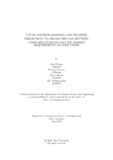| dc.contributor.advisor | Rahman, Md. Khalilur | |
| dc.contributor.author | Hasan, Raad | |
| dc.contributor.author | Hossain, Romaiya | |
| dc.contributor.author | Ahmed, Farah | |
| dc.contributor.author | Md. Iftekhar Islam, Md. Iftekhar | |
| dc.date.accessioned | 2021-09-09T12:02:12Z | |
| dc.date.available | 2021-09-09T12:02:12Z | |
| dc.date.copyright | 2021 | |
| dc.date.issued | 2021-06 | |
| dc.identifier.other | ID19301278 | |
| dc.identifier.other | ID 17101468 | |
| dc.identifier.other | ID 17101280 | |
| dc.identifier.other | ID 16201072 | |
| dc.identifier.uri | http://hdl.handle.net/10361/14992 | |
| dc.description | This thesis is submitted in partial fulfillment of the requirements for the degree of Bachelor of Science in Computer Science and Engineering, 2021. | en_US |
| dc.description | Cataloged from PDF version of thesis. | |
| dc.description | Includes bibliographical references (page 46-48). | |
| dc.description.abstract | Bangladesh, being an Agro-Economy based country, is lacking the technological improvements regarding Supply-Demand ratio of Food Supply to the citizens. Since the
recent price hike of onions in 2019, it is evident that such technological disadvantages
bring severe losses to the projection of demand of food items and can bring significant hindrance to the economy of the country, adversely affecting the daily lives of
the people. Therefore, we propose this paper to bridge the gap between Production,
Consumption, Import-Export and Supply-Demand ratio using Linear Regression,
Polynomial Regression, and Random Forest Techniques on datasets including and
not limited to Average Min-Max Monthly Temperature, Average Monthly Rainfall and Humidity, Land Area-Production-Yield ratios, and Daily Consumption etc.
This static dataset contains previous years’ data taken from the Yearbook of Agricultural Statistics and Bangladesh Agricultural Research Council of those crops according to the area. The six year production period of 2013 to 2018 and the weather
data set of 2008-2018 of Bangladesh have been taken into account in the formation
of this dataset to corroborate learning and training of the algorithms and elevating
the accuracy rate of the projection. The Cultivation Area estimates acquired are to
be cross-verified with Satellite Images. | en_US |
| dc.description.statementofresponsibility | Raad Hasan | |
| dc.description.statementofresponsibility | Romaiya Hossain | |
| dc.description.statementofresponsibility | Farah Ahmed | |
| dc.description.statementofresponsibility | Md. Iftekhar Islam | |
| dc.format.extent | 48 pages | |
| dc.language.iso | en | en_US |
| dc.publisher | Brac University | en_US |
| dc.rights | Brac University theses are protected by copyright. They may be viewed from this source for any purpose, but reproduction or distribution in any format is prohibited without written permission. | |
| dc.subject | Machine Learning | en_US |
| dc.subject | Weather Prediction | en_US |
| dc.subject | Land Area vs | en_US |
| dc.subject | Crop Production Prediction | en_US |
| dc.subject.lcsh | Machine learning | |
| dc.title | Use of machine learning and weather predictions to bridge the gap between consumer demands and the market requirements of food crops | en_US |
| dc.type | Thesis | en_US |
| dc.contributor.department | Department of Computer Science and Engineering, Brac University | |
| dc.description.degree | B. Computer Science | |

